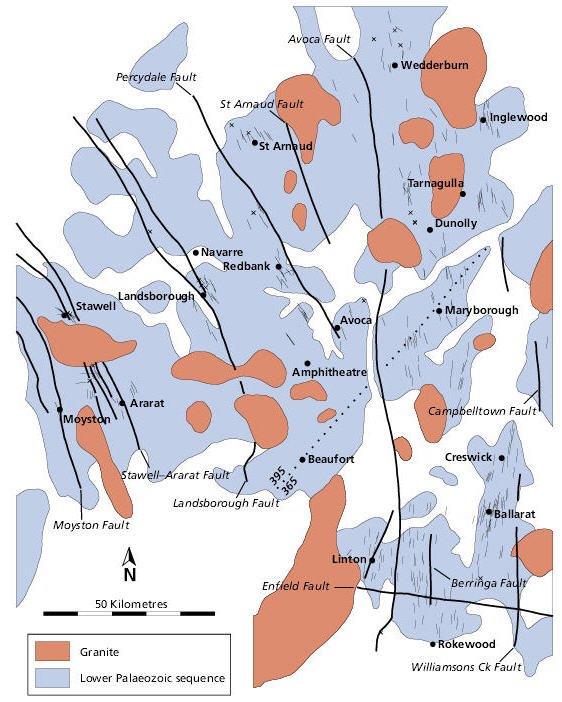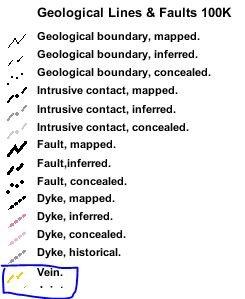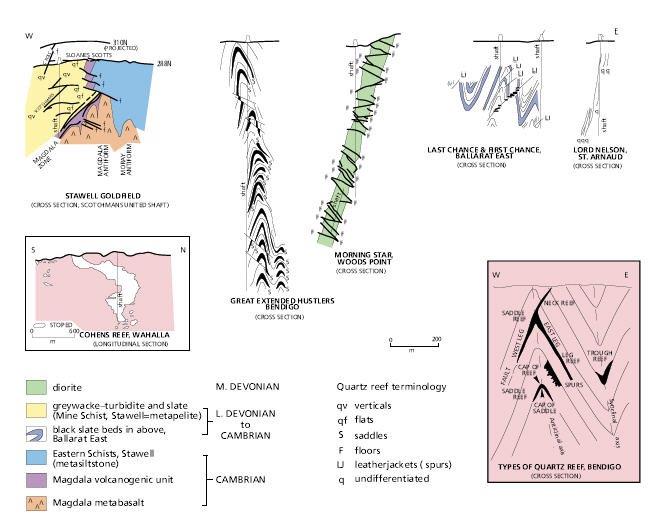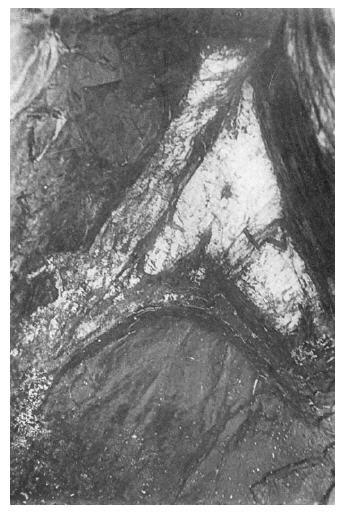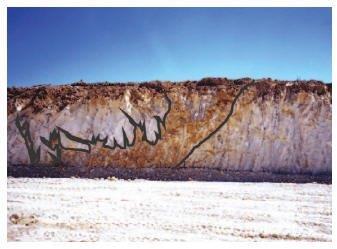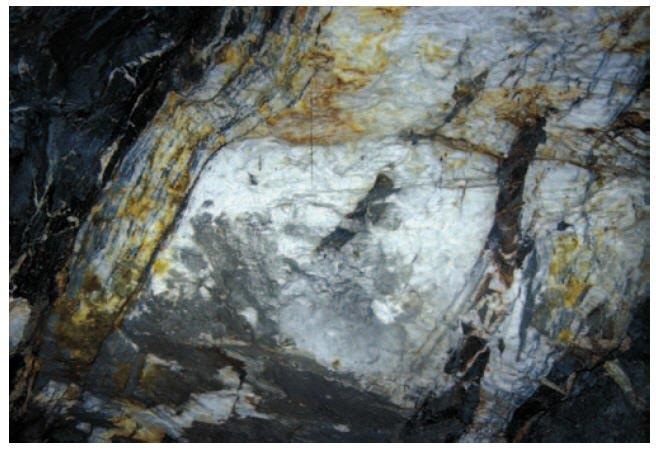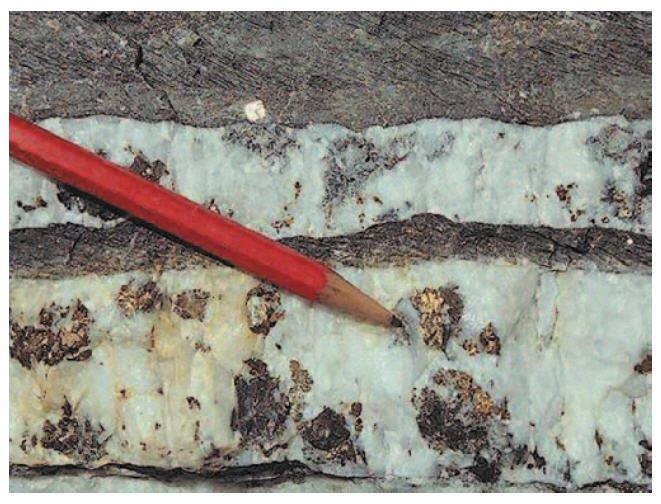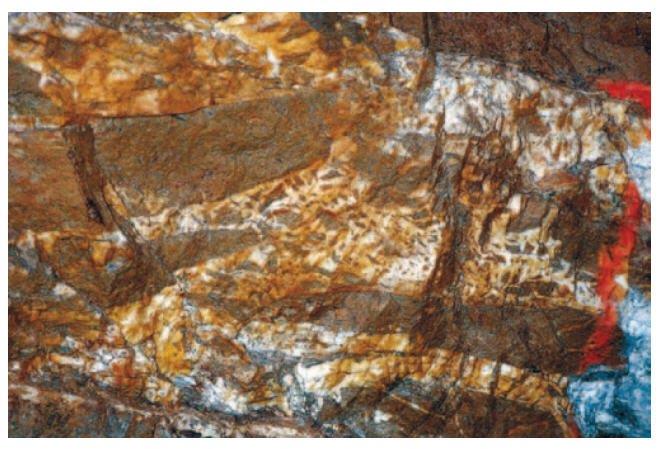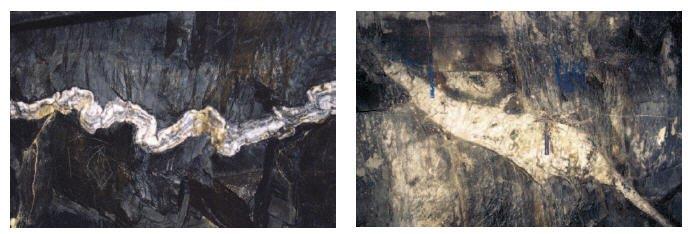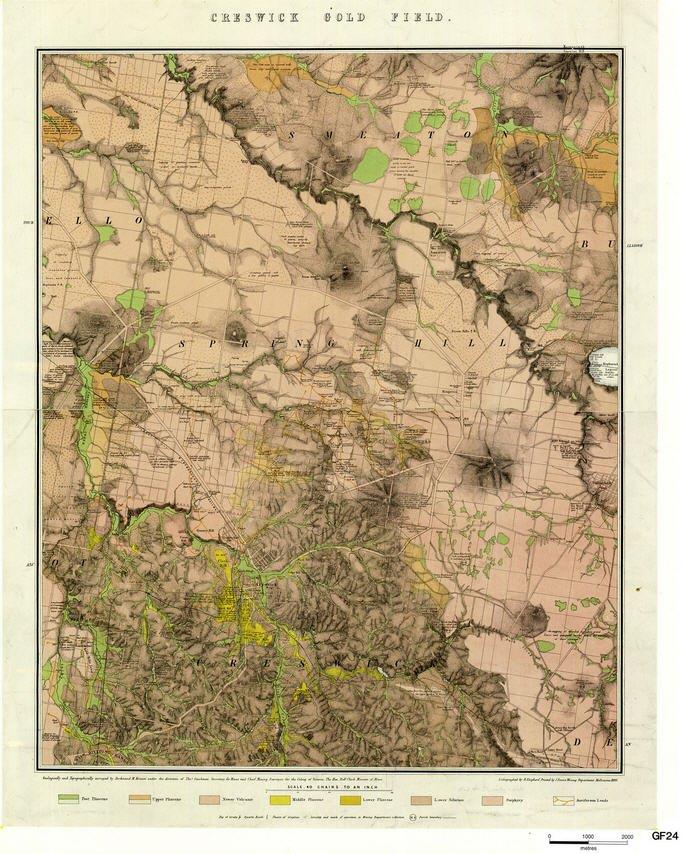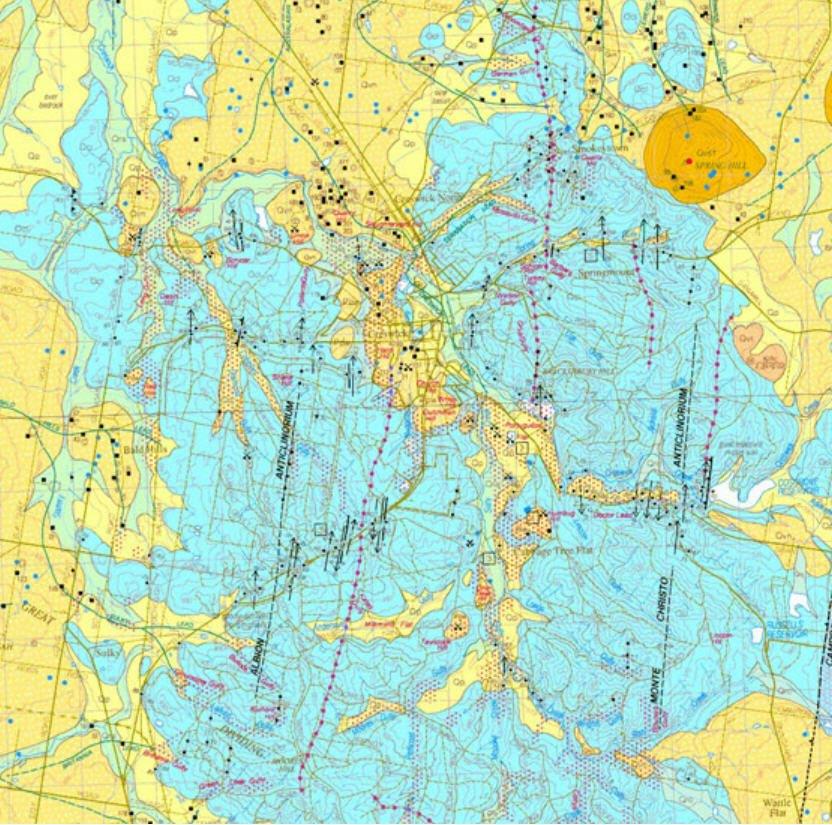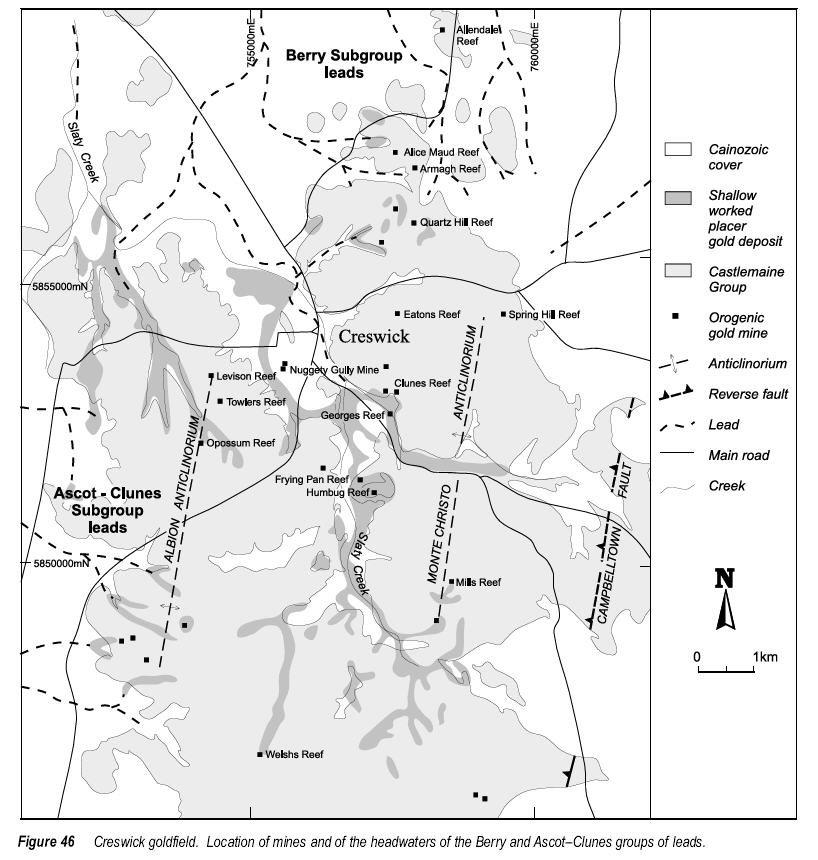It looks like they do include some veins then, even though it doesn't meet their own metadata definition. However I would suspect that the proportion of veins shown is tiny. Why not call up the area in Geovic that I show on my map above, and superimpose the vein and town layer and see how they compare for coverage and completeness. We may find that they have incorporated new data, or even my data since they use a bit of it (however if so, it would not be at a very accurate scale). However I suspect that they took the veins only from their 100K mapping since the 1980s (which were put there from older goldfields maps) - but if so, they only cover part of the state.
The other issue is the definition of what they mean by a vein - a "mineralised" vein or just a vein. It would more likely be the latter, as many of their historical maps show not only veins with minerals of interest in them. but any type of vein, the majority being unmineralised quartz veins on some of their maps. Also other veins in Victoria contain tin, tungsten, bismuth, antimony, copper, lead, zinc etc and many of these contain no gold (most antimony veins do contain gold). However MOST economically important veins in Victoria are gold veins (in northwestern Tasmania, tin veins - in central western Tasmania, lead-zinc veins, in northeastern Tasmania, tin and tungsten veins, around Cobar many are copper or lead veins and around Sydney silver veins. In Victoria around Buchan, lead-zinc veins, around Koetong and Walwa, tin and tungsten veins, near Everton, molybdenite veins.
The definition you give is quite an accurate one, but it meets the definition of not only gold veins but all of these veins, including simple quartz veins that contain nothing else but quartz - all of these metals can precipitate from aqueous solutions into a fracture (when can sometimes be a fault). Also note that the definition works at any scale, so it can be a sheetlike body 2 m long that forms part of a network of veins 5 m or 20 m wide that is not sheetlike overall, and that sheetlike body might be 3 km long (such networks extend at least 16 km around Ballarat, as the Ballarat Werst, Ballarat East and Nerrina (Little Bendigo) fields. Also sheetlike and planar are not synonomous terms, so a vein can be sheetlike but curving. Most big mines had a collection of veins - here is a single "ladder" vein or "floor" from near Woods Point:
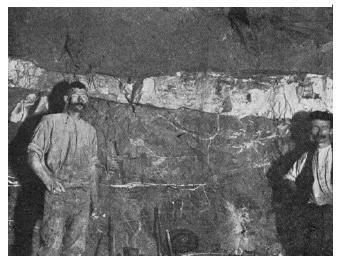
Here are some of the different vein patterns shown from different goldfieds - quartz veins shown in black (if you look at the Morning Star example, the above photo is from just one of those fairly flat ladder veins):
Example of a saddle reef from Bendigo:
A leatherjacket reef (quartz vein limits outlined in black) from a Ballarat mine:
Most small mines were on single, narrow, planar veins like thiis one at Avoca shown in cross-section, but they are just as good to detect around (it is 3 m wide but continues out of the page for hundreds of metres, and above and below for hundreds of metres):
Note the fragments and layers of rock caught uo in it, because it has filled a former fault zone.
Here is a close-up of it showing multiple parallel veins within it containing pyrite, galena, chalcopyrite, arsenopyrite and gold (rich in silver - mines in areas like Avoca and St Arnaud started as silver mines) - also dark rock fragments from the fault (they were already broken up in the fault zone when ore fluids came in to form the vein):
Here is a larger ladder vein from the Morning Star mine at Woods Point - we would call this a quartz breccia vein because it is so full of rock fragments from the fault it filled - assays here were 3 ounces per tonne over metres of width:
More than you wanted to know, eh? I try to keep it as simple as possible except when people ask some good questions to find ouit more (as you guys do)
So try making the comparison between Geovic and my map- if there are a lot more veins than I show they will not just be gold veins, since I show all the gold-bearing veins (but more likely there are less because they are only showing those easily taken from the main maps).




